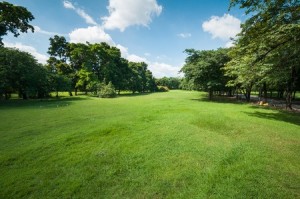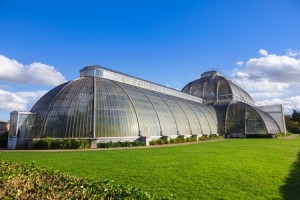It is hard for most of us to imagine a world without lawns in one form or another, whether it is your own garden or a public park, which is just a very large lawn for everyone to enjoy. We take this recreational space for granted, as an arena for picnics and sports days, celebrations and get-togethers and perhaps that is why so many of us put so much time into our gardens, especially in pursuit of the perfect lawn.
Thank you for reading this post, don't forget to subscribe!
It hasn’t always been that way though, the early idea of the lawn as an area of short grass (as opposed to a meadow) came into being in the middle ages, when areas of grazing land that had been cropped close were referred to as landa, the Common Brittonic word for heath or clearing, or launde in Old French. “Lawn” sometimes appears in place names that have an association with grazing land and the word eventually became used to refer to the lawns we know and love today, which appeared during the 1600s around the manor houses and estates of the aristocracy.
Born of a desire to keep the lower classes out of sight it became fashionable to construct elaborate and extensive gardens around the main house which would hide nearby settlements and provide the landowners with some privacy and respectful distance. In Britain the lawn was the paintbrush of Lancelot “Capability” Brown, nicknamed so due to his seemingly endless abilities to transform a landscape from one thing into another.
His style used lawns and grassy areas to create a visual journey through the landscape of stately homes, often giving the illusion of a much larger estate through careful planting. He also planted coppice woods and meadow areas to give the estate resources such as pollen for honey and wood for fuel, and these features served to bed the design firmly into the surroundings, giving the impression of mature parkland. This was no mean feat when you consider that he was often starting with very formal lawns and gardens that were the fashion in the late 1600s, perhaps inspired by the elaborate French style of the time.

Not all landowners continued to use their lawns as a barrier, and as time went on some decided to open parts of the grounds to the public as a recreation area. This happened as part of the upper classes’ desire to civilize the lower classes by providing them with culture, a sweeping social change of the Victorian era which also saw public parks in construction and the introduction of several laws promoting free education and a form of welfare state for the poor.
Nowadays the lawn is considered a more middle class pastime; with the wealthy often having contractors to maintain their gardens, it is usually left to the average person to patiently mow every weekend and provide a leisure space for the family. Capability Brown’s carefully designed landscapes still endure where they survive but unfortunately as tastes changed many of his 170 parks were altered beyond recognition.
Some, such as Petworth Park in Sussex and Kew Gardens in London can be visited by the public and enjoyed as he intended, for although the effect was primarily to impress from the house, his landscapes contain many features that can only be enjoyed by exploring his man-made version of the rolling English countryside.
So next time you are lying back in your garden with a good book, or pouring another round of drinks with friends take a moment to be thankful for the development of the lawn and all it has given us, for just 500 years ago the lawn as we know it did not exist.
